Updating your local business listings can improve your business’s visibility in search engines, AI tools, and voice assistants.
It also ensures your audience gets accurate information about your business, which can lead to more traffic, walk-ins, and phone calls.
Let’s explore exactly how to update your local business listings. But first, let’s take a closer look at why it’s important to keep your listings updated.
Why Should You Update Business Listings?
Consumers rely on local listings to decide where to go, when to visit, and what to expect. And when those details are wrong, the cost is real:
- 62% of consumers would avoid using a business if they found incorrect information online
- 7% would abandon their search entirely if they saw the wrong address
- 26% have visited business hours at incorrect hours, resulting in missed visits and frustrated customers
- 23% come across fake listings at least once a month, which could send them to competitors and scams
Maintaining accurate and updated listings can:
- Ensure NAP consistency: NAP stands for name, address, and phone number. Consistent NAP across directories help search engines verify your details and improve local rankings.
- Share accurate information with your audience: People use local business listings to check a business’s operating hours and address, get directions, and make a call. If your details are outdated, they might call the wrong number, visit the wrong address, or show up when you’re closed.
- Improve local visibility: Consistent listings across directories create a better user experience and increase your chances of ranking higher in local searches
- Increase conversions: Higher visibility and accurate information encourage potential customers to take action, such as visiting your site or making a purchase
- Fix errors from third-party sources: Directories (like Yelp, Bing, and Yellow Pages) pull business details from multiple sources like government records, data aggregators, and websites. But this info isn’t always correct. Claiming and updating your listings prevents errors from spreading.
- Highlight new offerings: Use your listings to share new services, promotions, or limited-time offers to boost conversions
- Stay visible during changes: During holiday seasons, unexpected closures, or emergencies like COVID-19, keep your listings updated to keep customers informed
What to Keep Updated on Your Local Business Listings
Here are key elements to monitor:
- Business name, address, and phone number (NAP): These are the basics customers rely on to reach or visit you. If you move locations, rebrand, or get a new phone number, update your listings immediately. Consistent NAP boosts local SEO.
- Business hours: Keep operating hours accurate, including holidays and seasonal adjustments, or temporary closures due to weather, renovations, or events like COVID-19.
- Products and services: Regularly update your local business listings to reflect new products, services, or packages
- Photos and videos: Upload fresh, high-quality images of your storefront, interior, staff, and products to give customers a real look and feel of your business
- Offers and promotions: Use tools like Google Posts to highlight deals and limited-time offers
- Customer reviews: Customer reviews influence trust and local search rankings. Encourage reviews, and respond to them—especially negative ones.
How to Automatically Update All Your Local Listings
Manually updating your business listings across multiple directories is time-consuming and leaves room for errors.
Instead, it’s more efficient to use a platform that automatically updates information across multiple directories from a single dashboard. Like Semrush’s Listing Management tool.
This tool allows you to:
- Connect your Google Business Profile (GBP) and update your business info across directories with a few clicks
- Detect and remove duplicate listings
- Review and manage user-suggested edits for better control over your business information
Follow these steps to update online business listings:
Step 1. Scan Your Listings
Log in to Semrush, hover over the “Local” toolkit in the left-navigation bar, and click “Listing Management.”
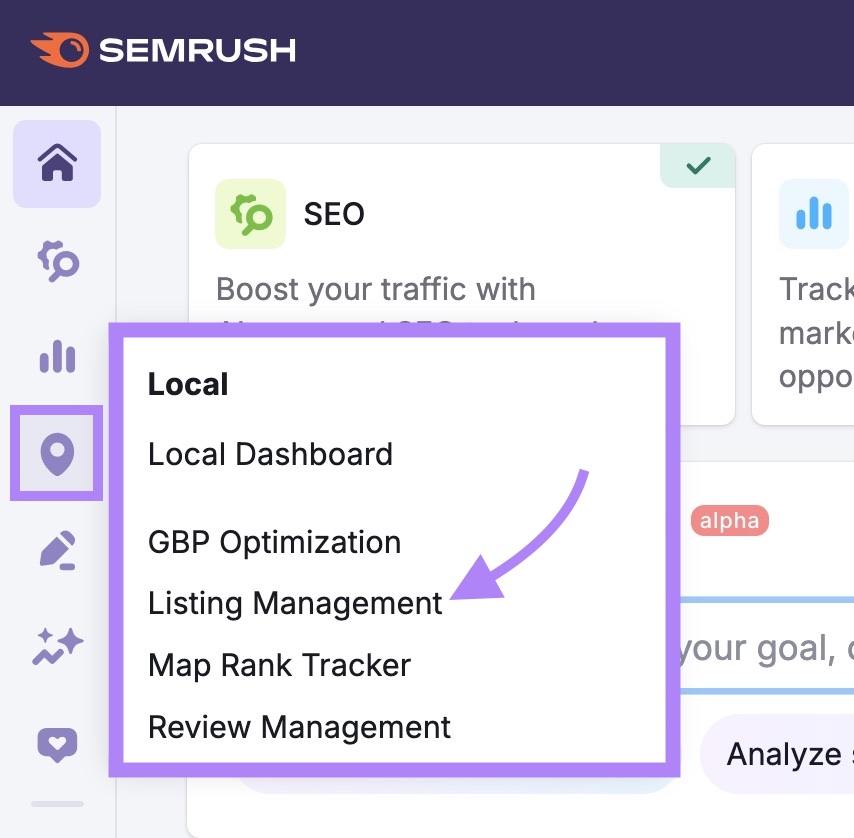
Enter your business name, website, or phone number to find your listings.

The tool will scan the web for existing local listings tied to your business.
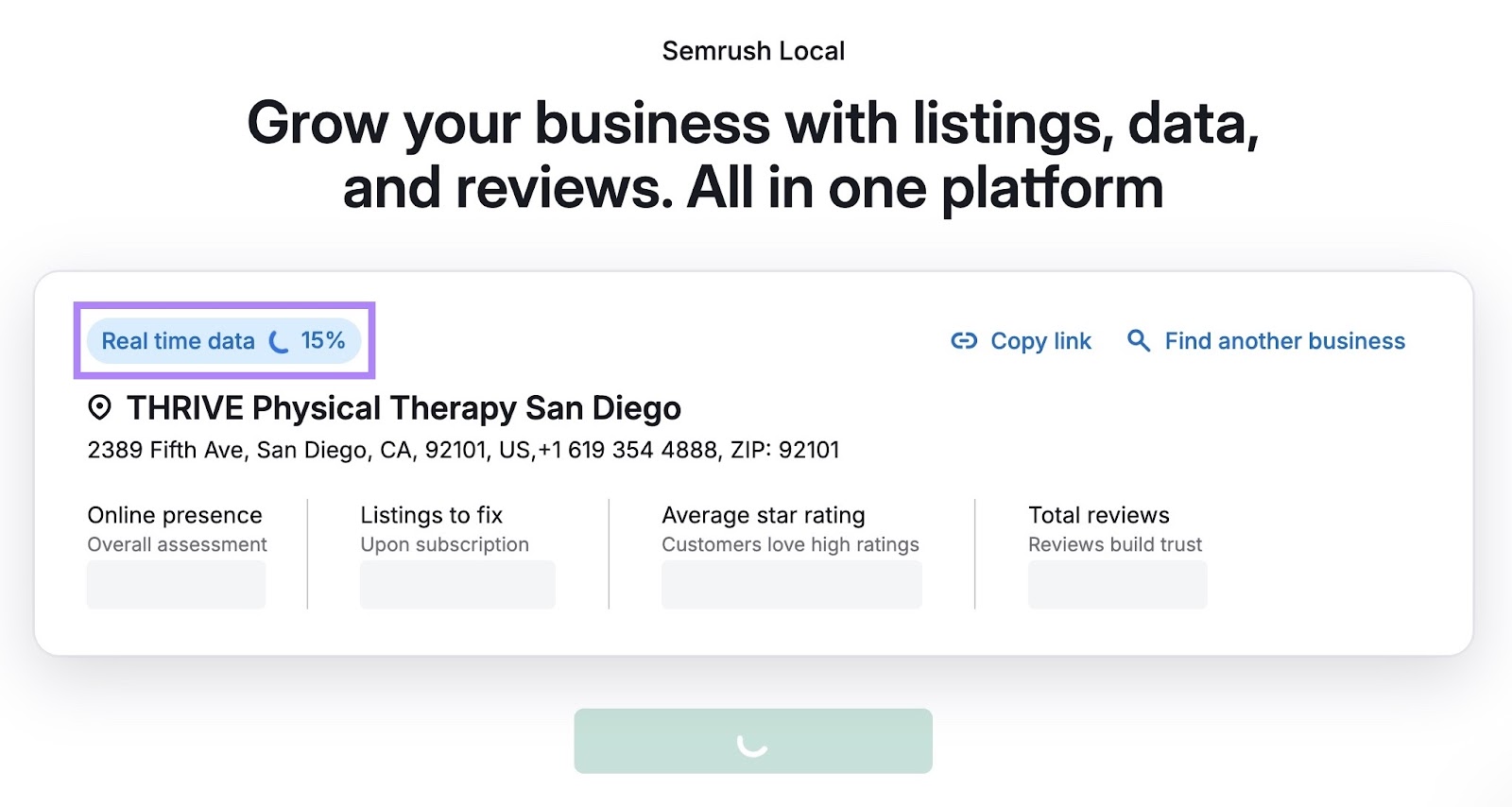
Step 2. Review Your Listings Snapshot
Once the scan is complete, you’ll see a snapshot of your local online presence. This includes an overall visibility score, how many listings need updates, your average star rating, and total number of reviews.
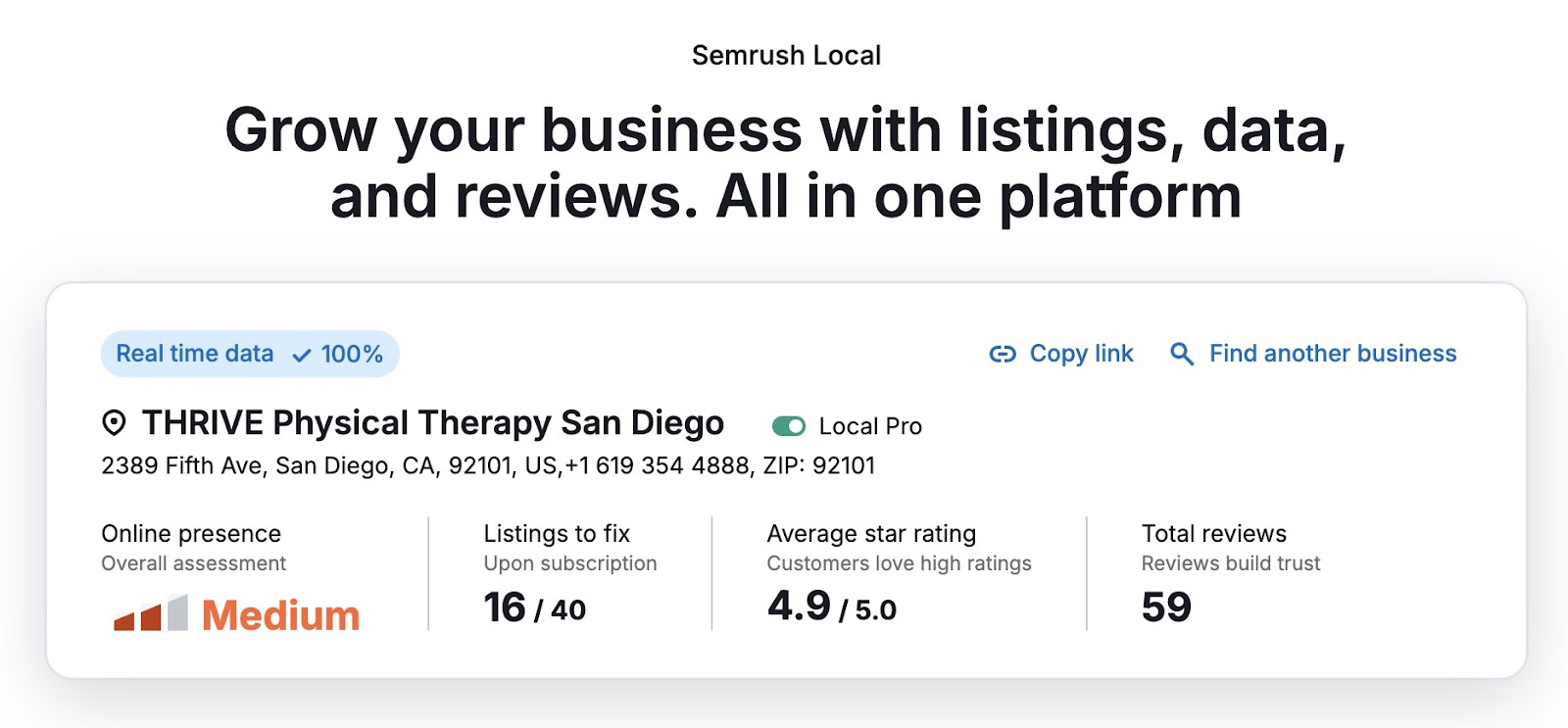
Scroll down to view a directory-by-directory breakdown that shows where your business is listed, where it’s missing, and what specific issues need to be fixed (like missing phone numbers or outdated addresses).
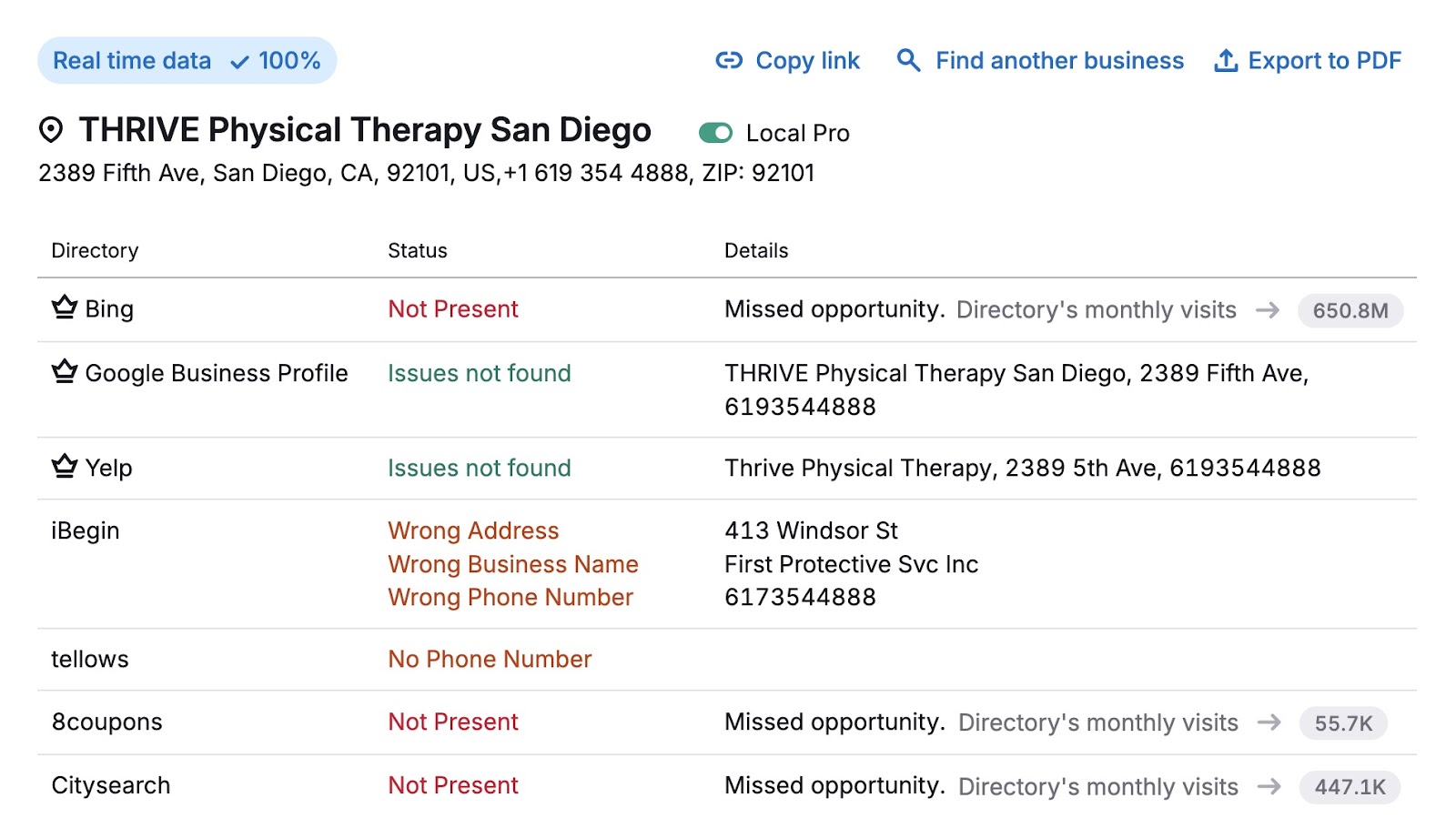
Click “Try it now” to start syncing your business info.
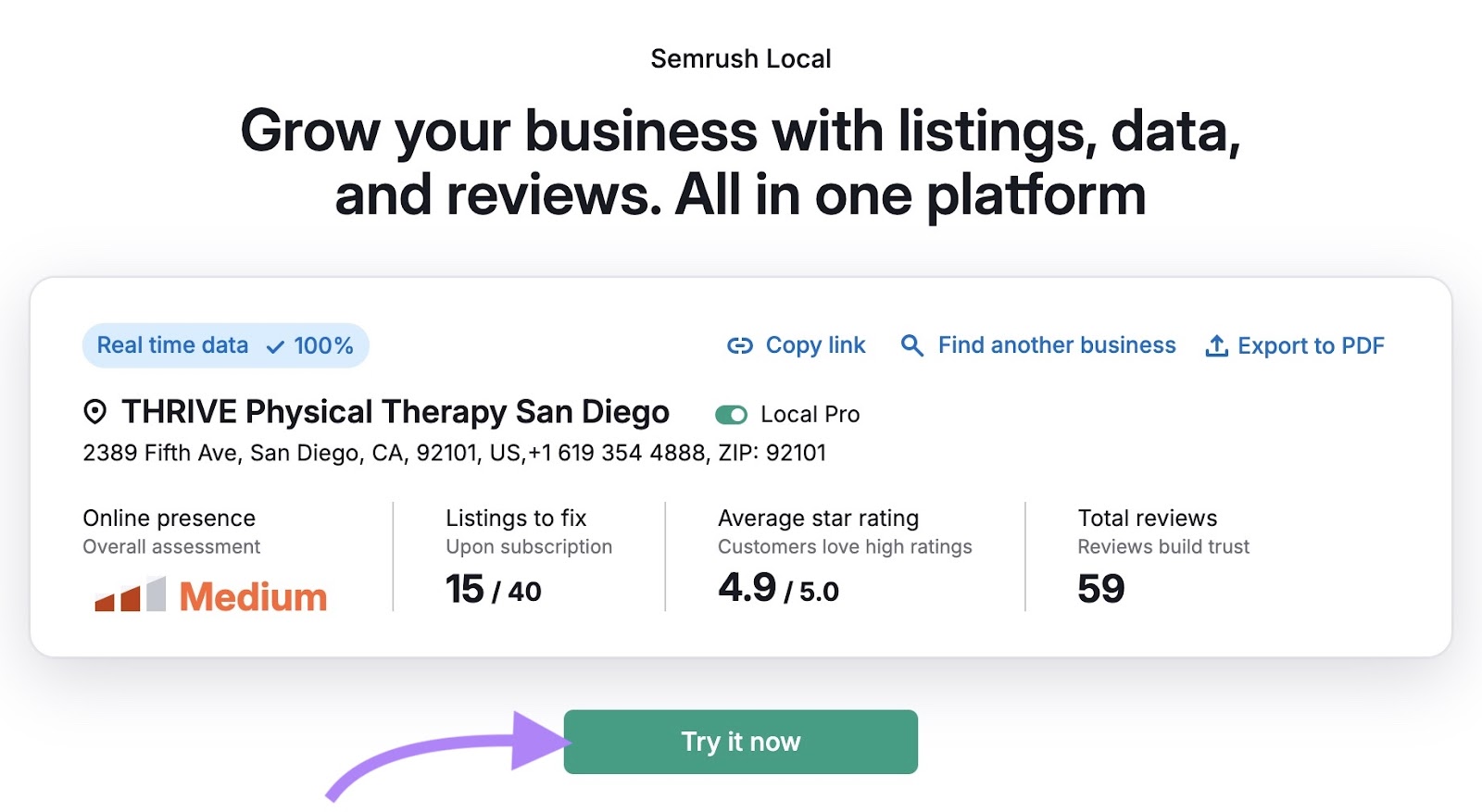
Step 3. Fix and Sync Your Info
To add your business, set up your location. You’ll have two options:
- Connect your GBP listing: The tool will use your Google Business Profile to pull accurate business information and sync it across directories
- Enter your business details manually: If you don’t have a GBP or prefer not to connect it, you can input your information directly into the tool
Once done, you’ll land on your Listing Management dashboard.

From here, the tool will verify your business information and sync it across directories. It can take a few hours to pull in your data. And around 2-3 weeks to complete distribution across all directories.
You’ll see three key tabs:
Listings tab: This displays all directories where your business is listed, with the current status: connected, submitted, processing, or disconnected or unavailable. You can also view and manage each listing directly.

Duplicates tab: This tab highlights duplicate listings. You can review and suppress duplicates here.
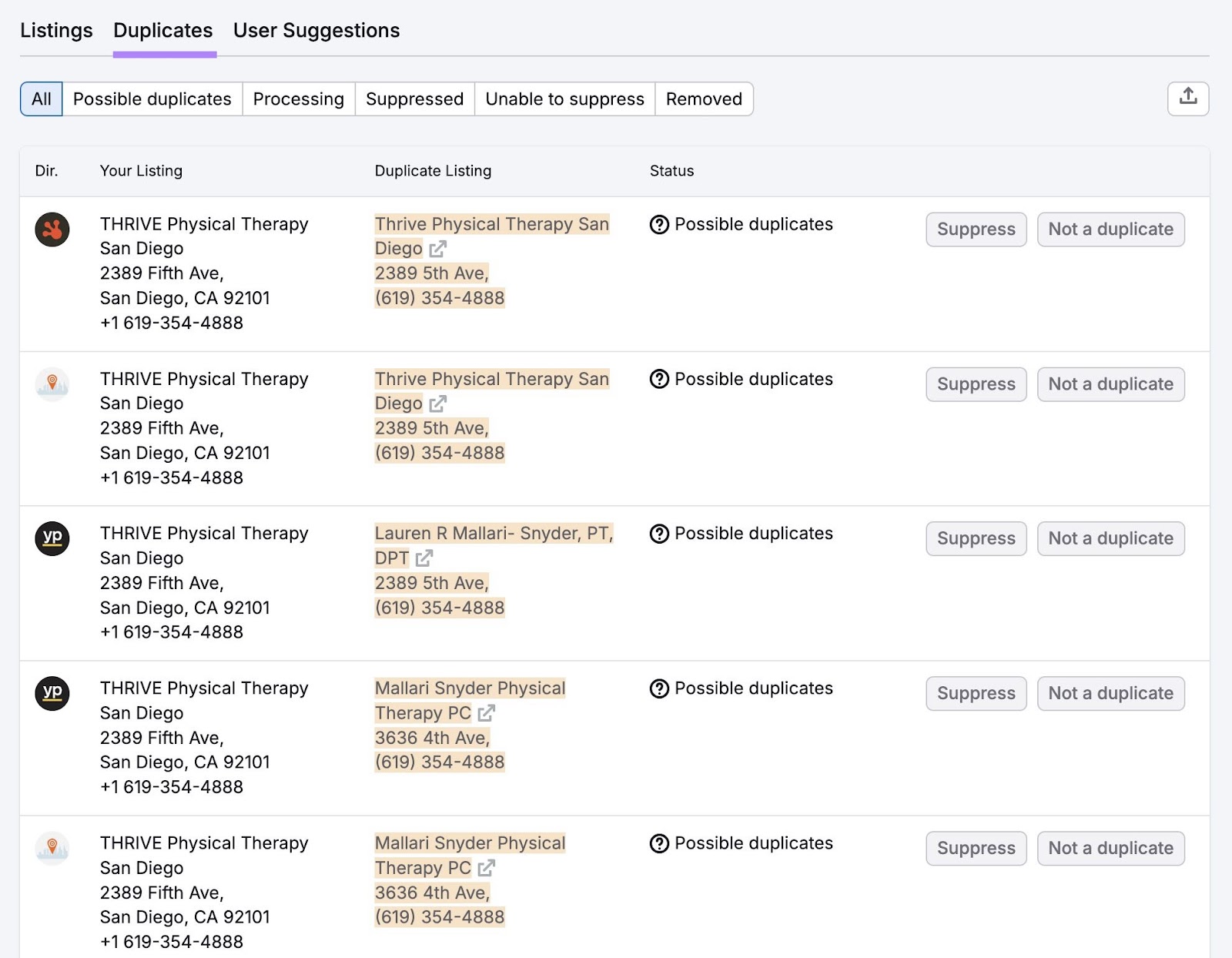
User Suggestions tab: If users suggest changes to your listing (like updating your phone number or hours), they’ll appear here. You can easily approve or reject suggestions directly from this tab.
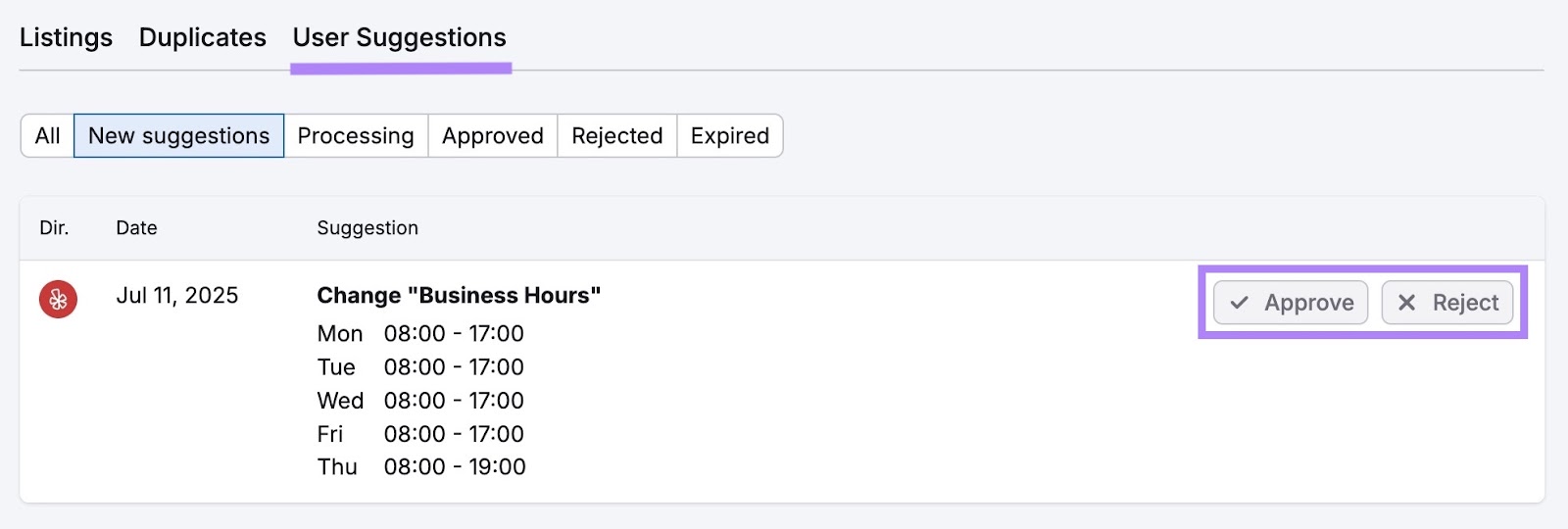
To keep your listings up to date, you can either edit your business information manually or connect your Google Business Profile to sync changes automatically.
Just click “Edit business info” from the dashboard to make updates.
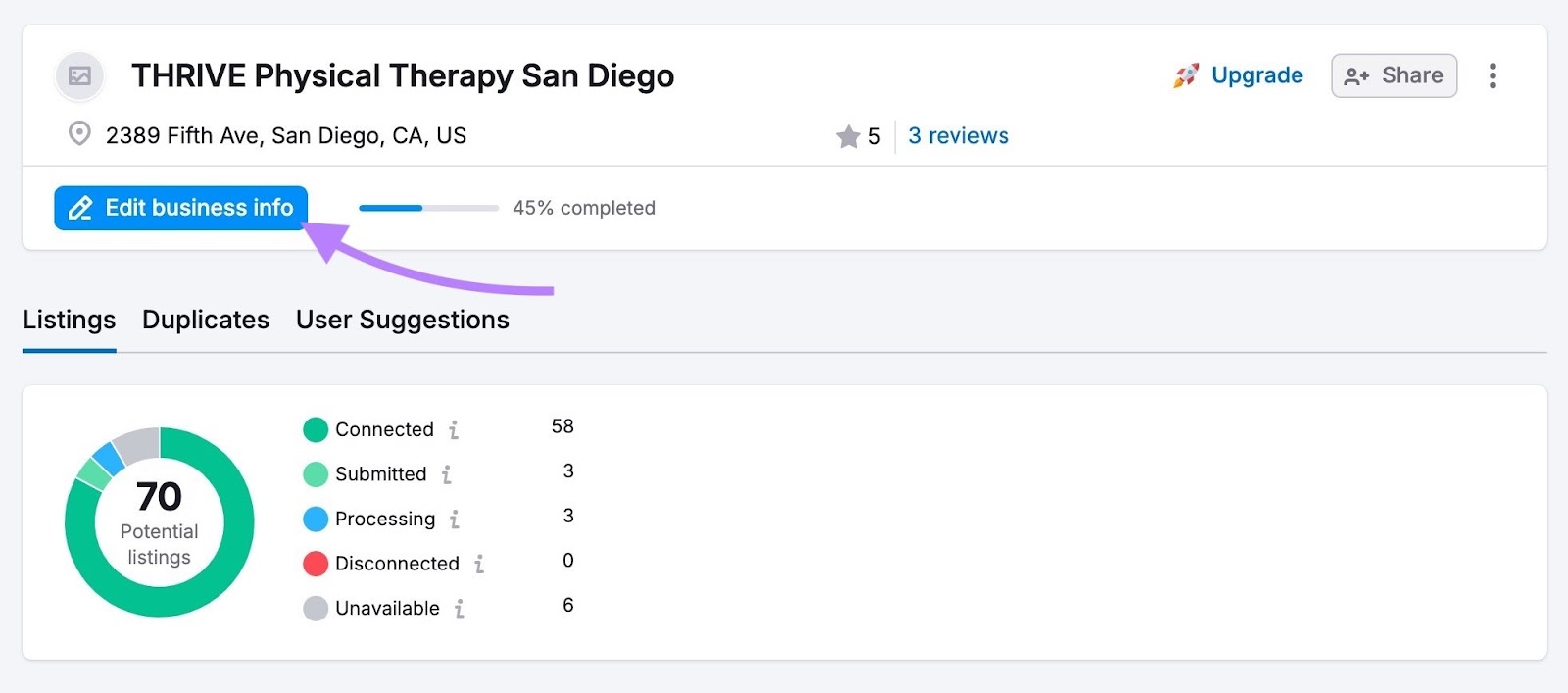
The 4 Most Important Local Listings to Update
These four local business listings are crucial because search engines, AI tools, and voice assistants pull business data directly from them.
1. Google Business Profile: Best for Overall Local Search Visibility
An updated Google Business Profile (GBP) signals to Google that your business is active and reliable. This can improve your chances of ranking higher in relevant local search results.
Your GBP appears on Google Search, Maps, and Shopping when someone performs a local search, such as “best dentists near me,” or “best Indian restaurants in Manhattan.”
By keeping your GBP complete and current, you also increase your chances of appearing in the Google Local Pack. The Local Pack is a SERP feature that displays a map along with three top local business listings for location-based search queries.
Here are the top three local search results for “best Indian restaurants in Manhattan.”
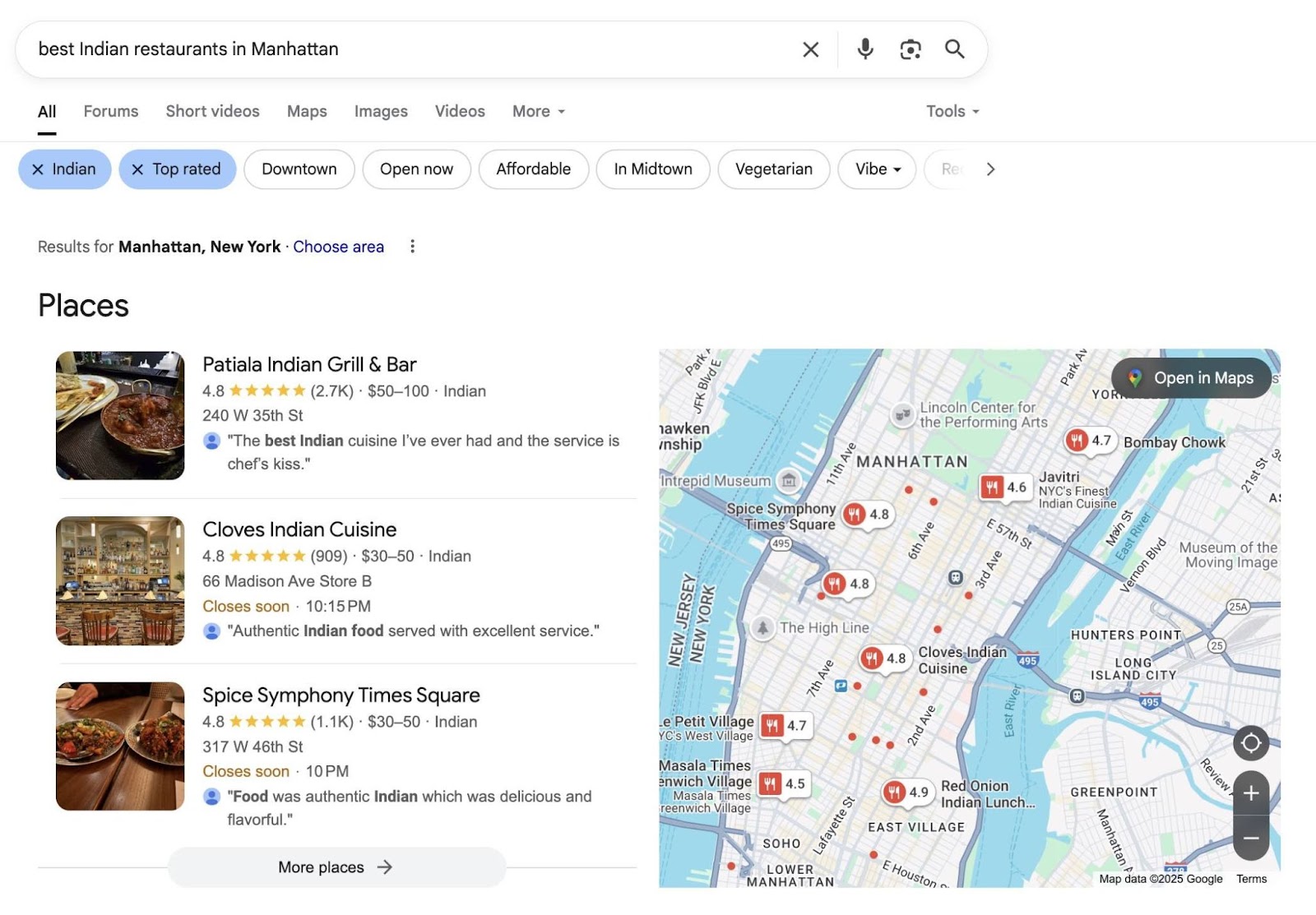
Also, Google’s most recent data shows it processes 5 trillion searches per year, and at least 46% have local intent. That’s around 2.3 trillion local searches annually.
So, if your listing is outdated, you could miss out on many potential customers.
To update your GBP listing, log in to the Google Account linked to your business. And click “Edit profile” to open a window to edit your business information.
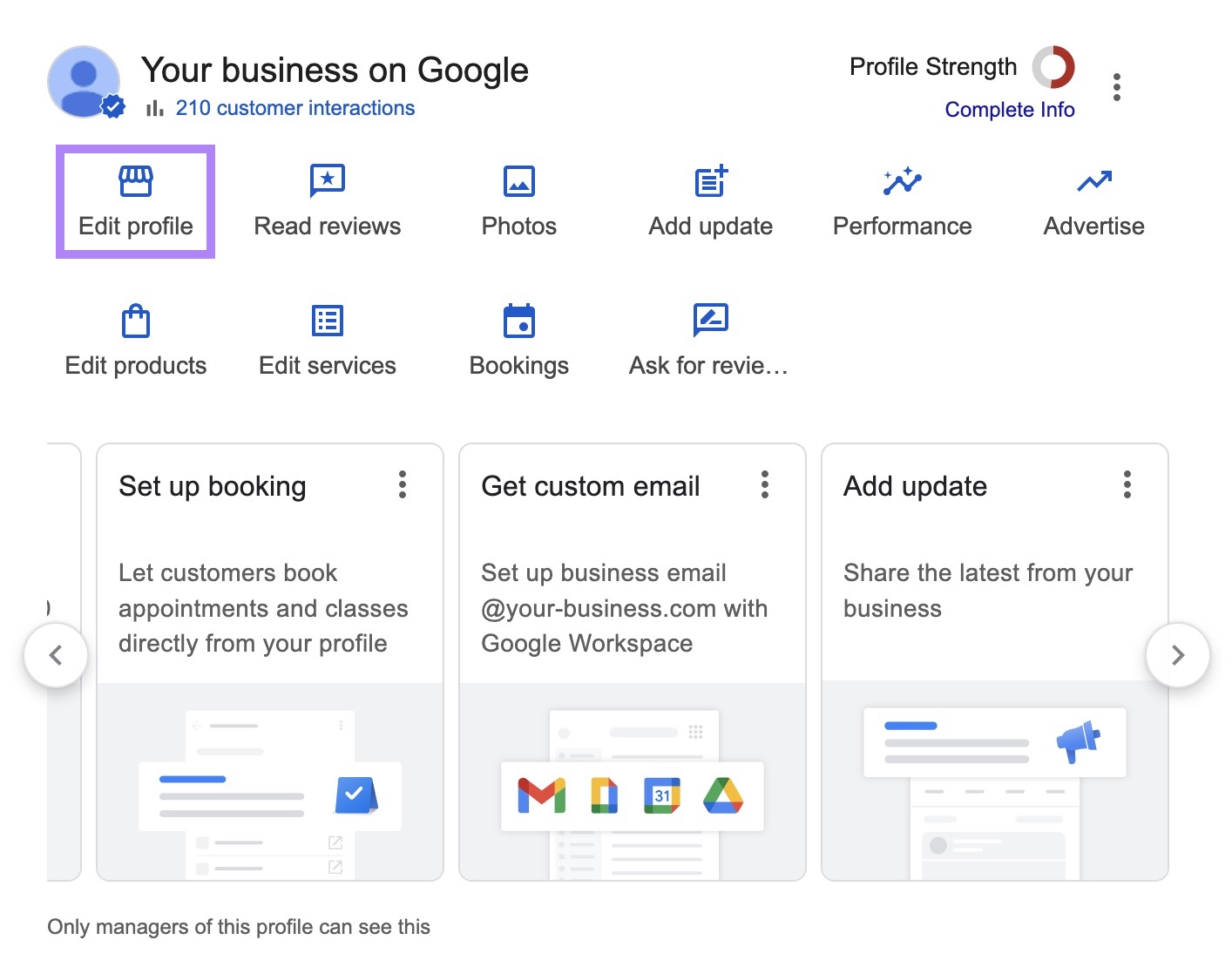
Choose what to update. Like your business name, address, hours, or category.
Save your changes to keep your listing accurate and up to date.
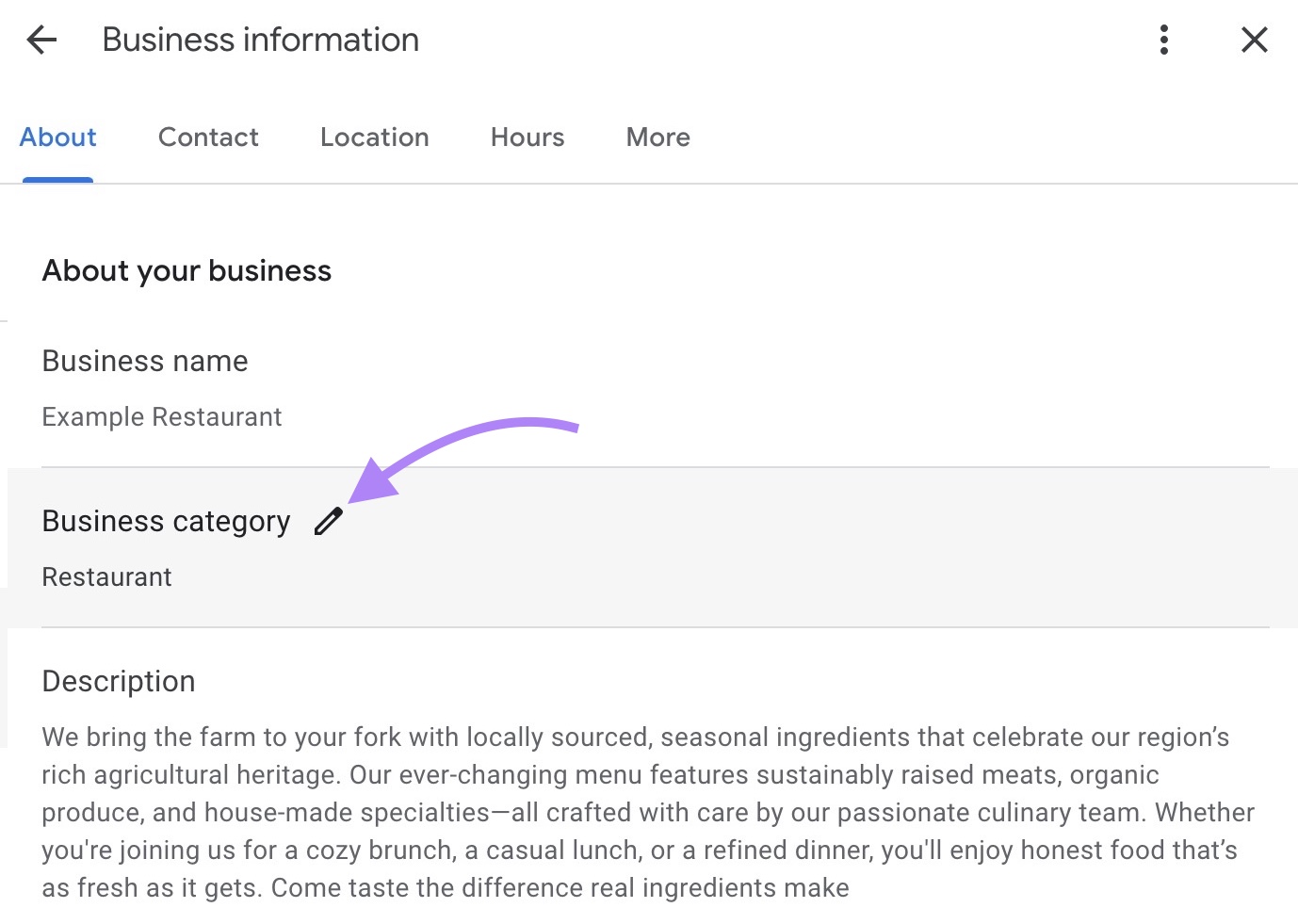
2. Yelp: Best for U.S.-Based Local Businesses
Keeping your Yelp listing updated can improve its chances of appearing in local search results on Yelp, Yahoo, and AI platforms like ChatGPT.
Yelp partnered with Yahoo to power its local listings, which is why it fetches its local search results from there.

And when we searched “best Indian restaurants in New York” on ChatGPT, it listed Yelp as one of the sources.
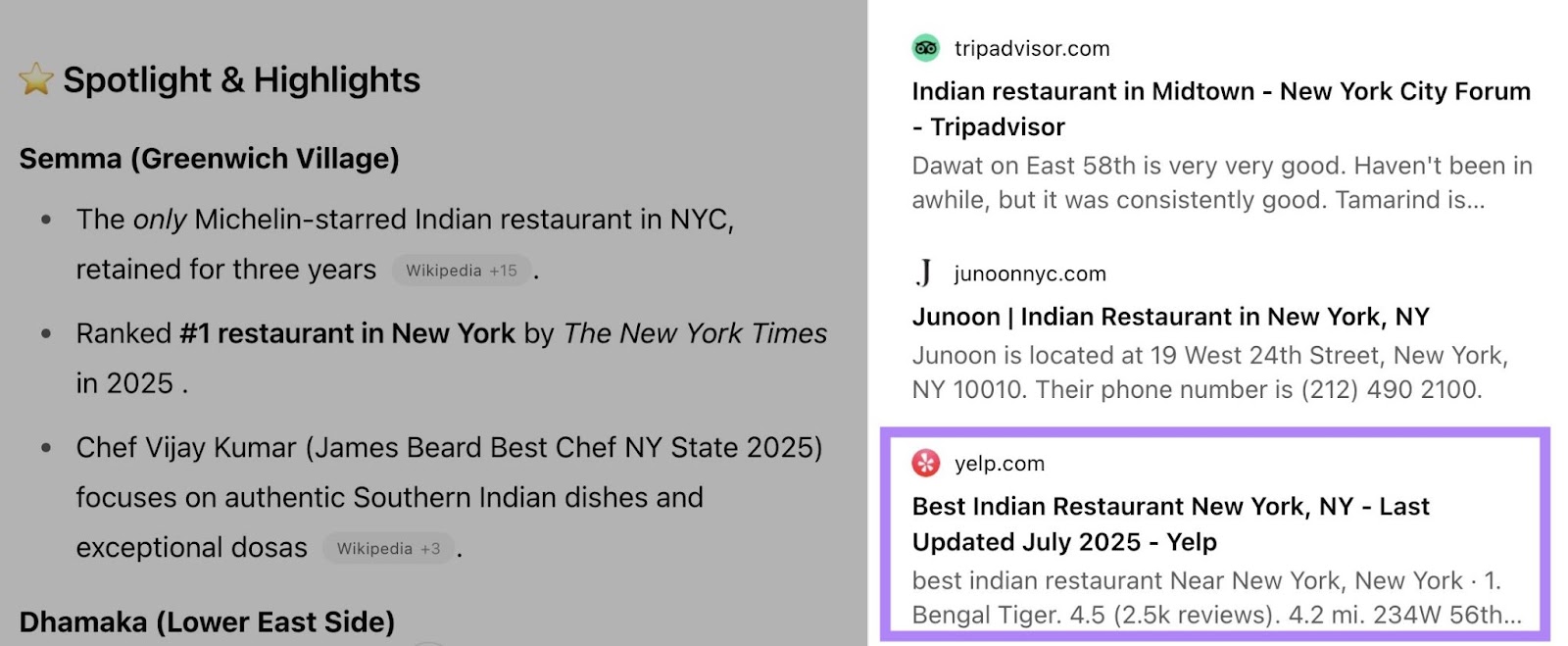
Yelp also attracts more than 175 million visits per month from the U.S. alone.

That’s a huge opportunity to reach high-intent local customers searching for businesses like yours.
To update your Yelp listing, go to your Yelp business page and click “Edit Business Info” to update details like your address, hours, and services.
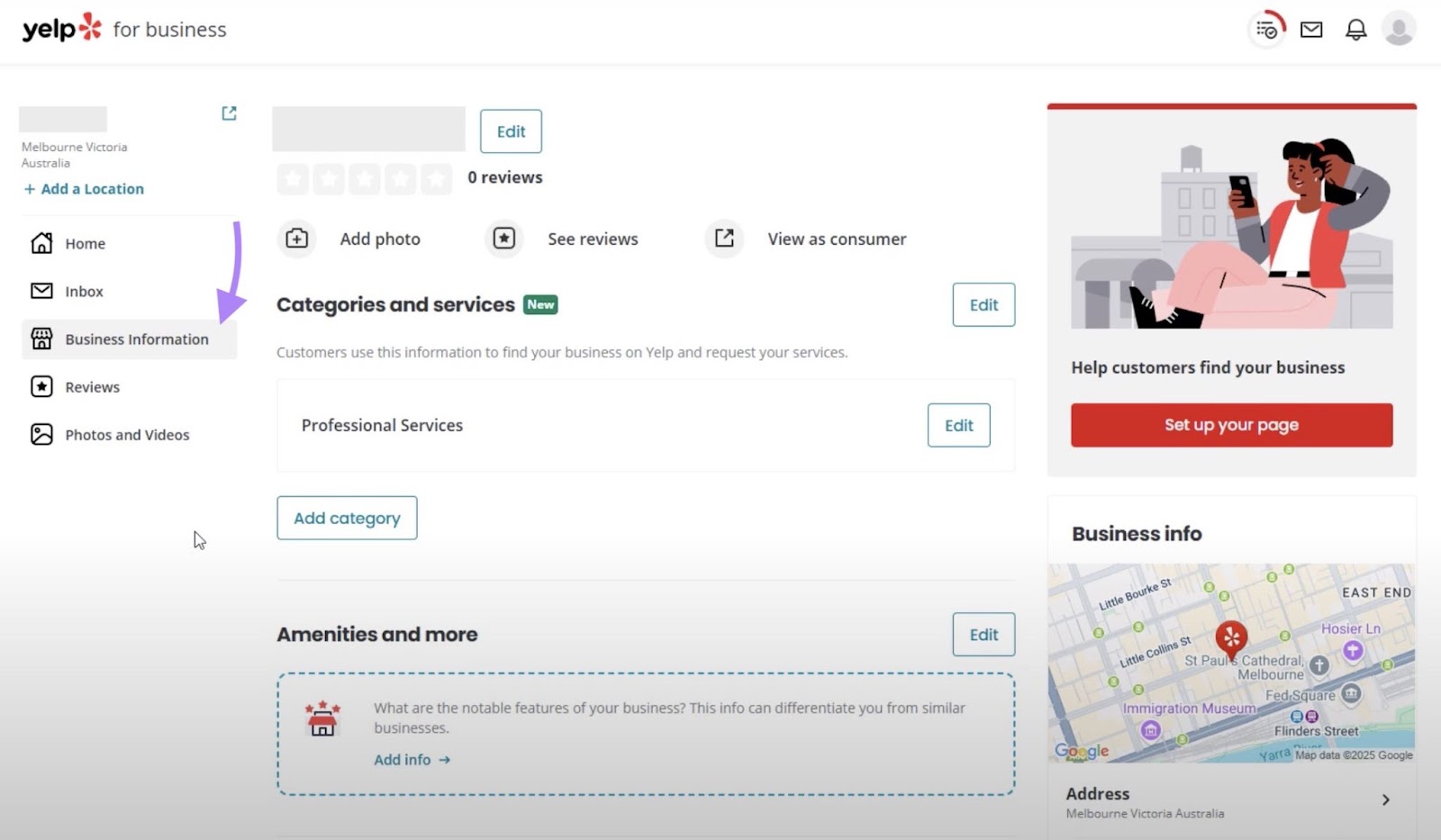
Alternatively, you can use Semrush’s Listing Management tool within Semrush’s Local Toolkit to update your Yelp listing along with dozens of others from a single dashboard.
3. Tripadvisor: Best for Travel-Driven and Hospitality-Focused Businesses
Tripadvisor is a leading customer review site for discovering hotels, restaurants, tours, and local attractions. Even local customers use it to find nearby businesses.
Updating your Tripadvisor listing can improve your ranking in Tripadvisor search results. That means more visibility among users actively looking for places to eat, stay, or visit.
But the impact extends beyond Tripadvisor.
Search engines like Bing, Brave, and DuckDuckGo pull local search results directly from Tripadvisor for hotel- and restaurant-related local search queries.
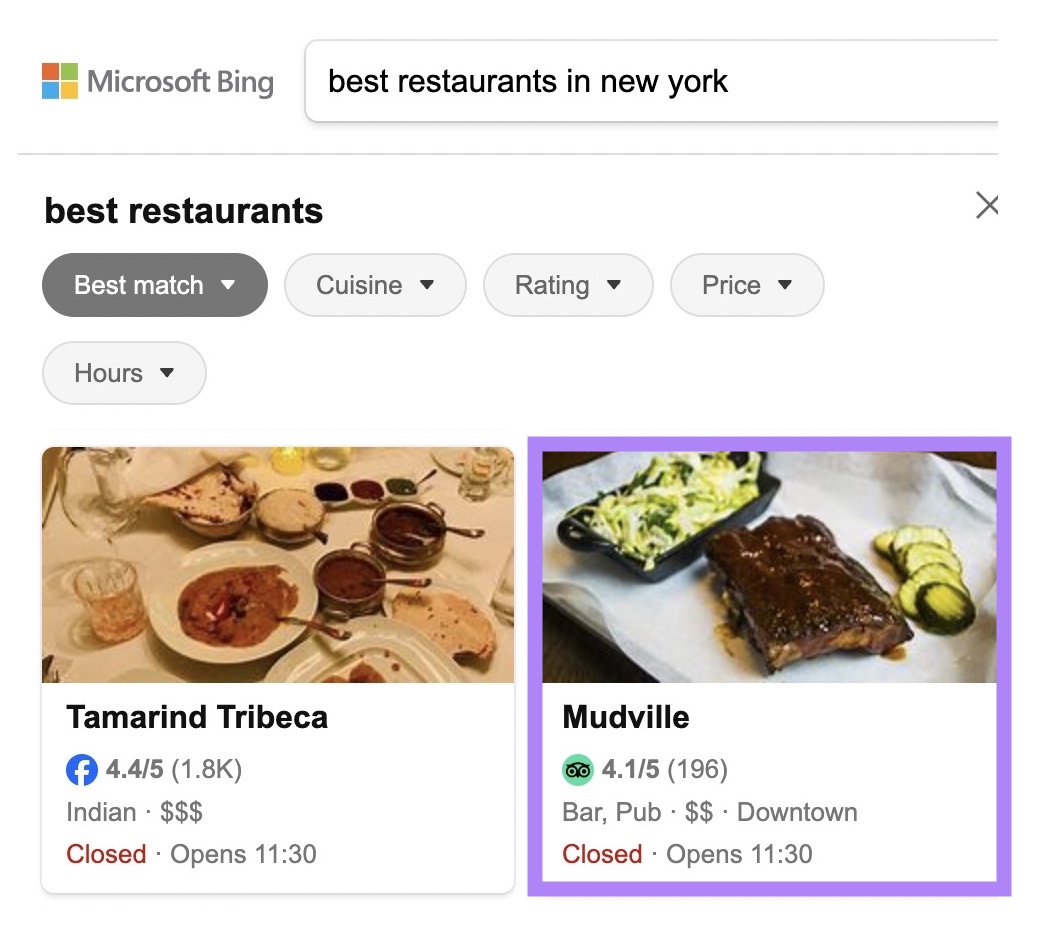
Tripadvisor content may also appear in AI platforms like ChatGPT.
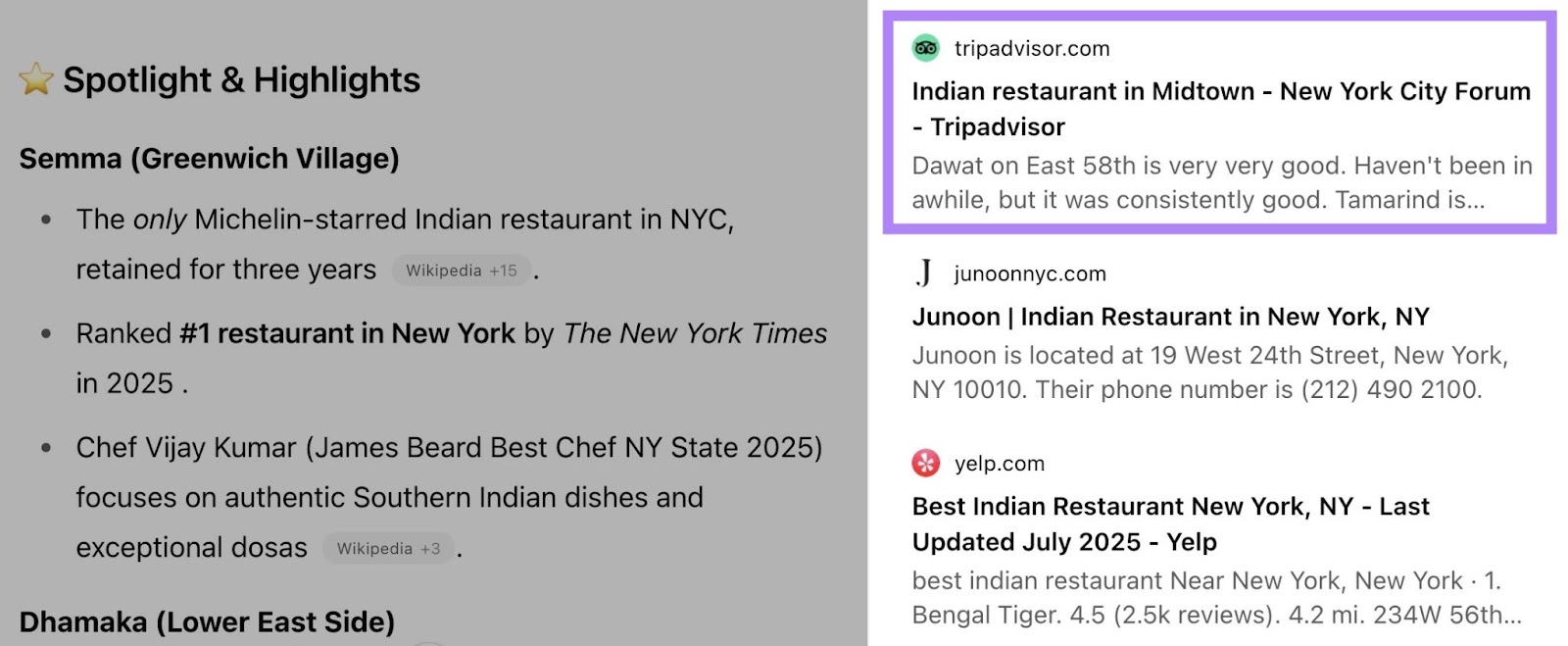
Tripadvisor’s reach is massive. The platform receives more than 162 million visits from the U.S. alone.

And over 5 million from the U.K.

For travel, food, or experience-based businesses, keeping your Tripadvisor listing complete and up to date allows you to tap into this traffic and convert it into real-world customers.
To update your Tripadvisor listing, go to the Management Center. Edit details like your address, contact info, hours, and amenities. Then submit the changes.

Tripadvisor will review and publish the changes.
4. Facebook: Great for Local Engagement, but Limited SEO Impact
Facebook is the world’s most popular social media platform and a powerful tool for local business discovery. With nearly 3 billion monthly active users, it’s a great platform to list your local business.
To create a business listing, you’ll need a Facebook Business Page.
This page serves as your business’s public profile, displaying details like hours, location, reviews, photos, and contact info. Customers can also message you directly, leave reviews, and tag your business in posts.
Here’s what an updated Facebook page looks like:
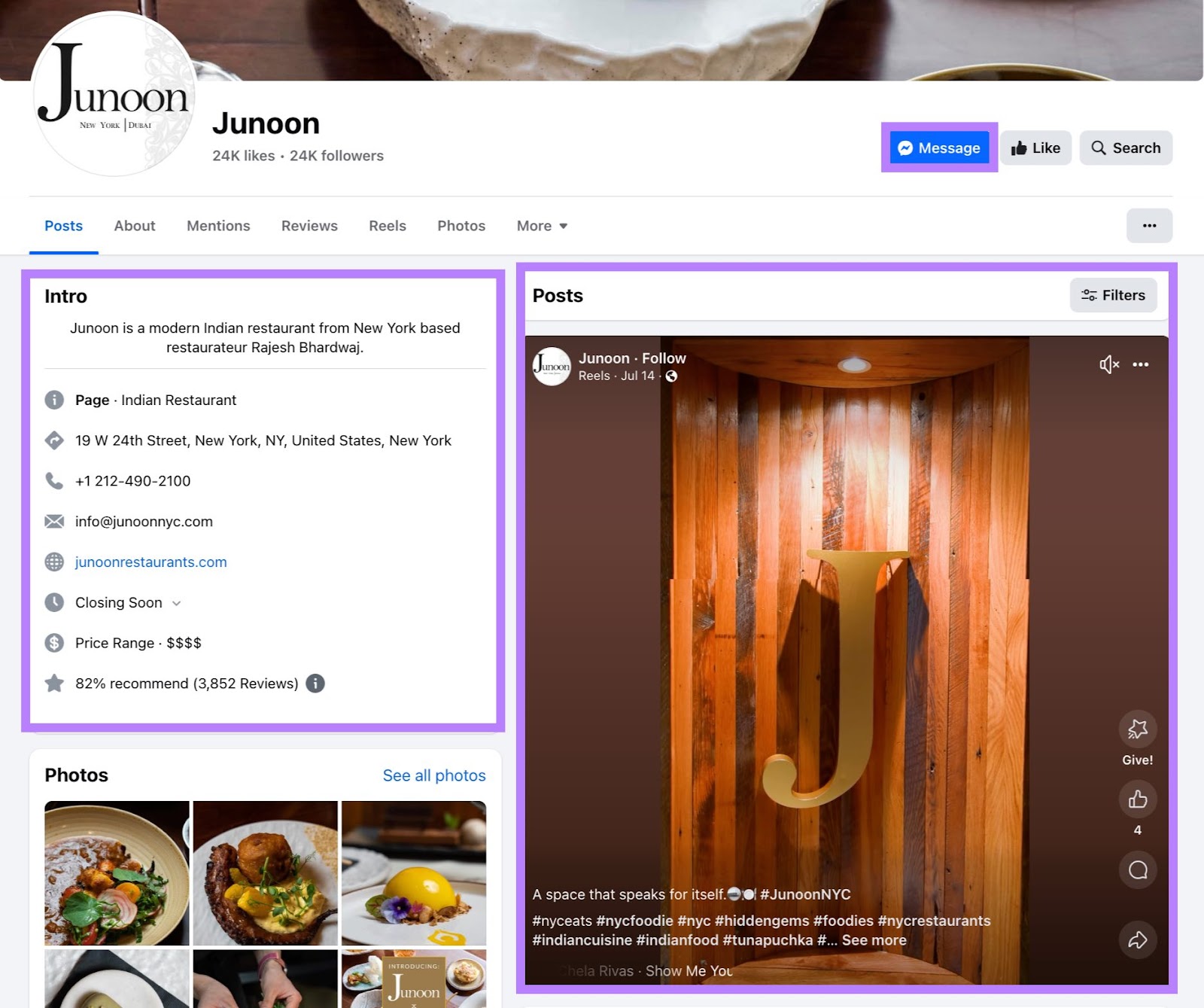
Search engines like Bing pull local business data from Facebook listings. So keeping your Page updated can improve your local visibility on Bing.
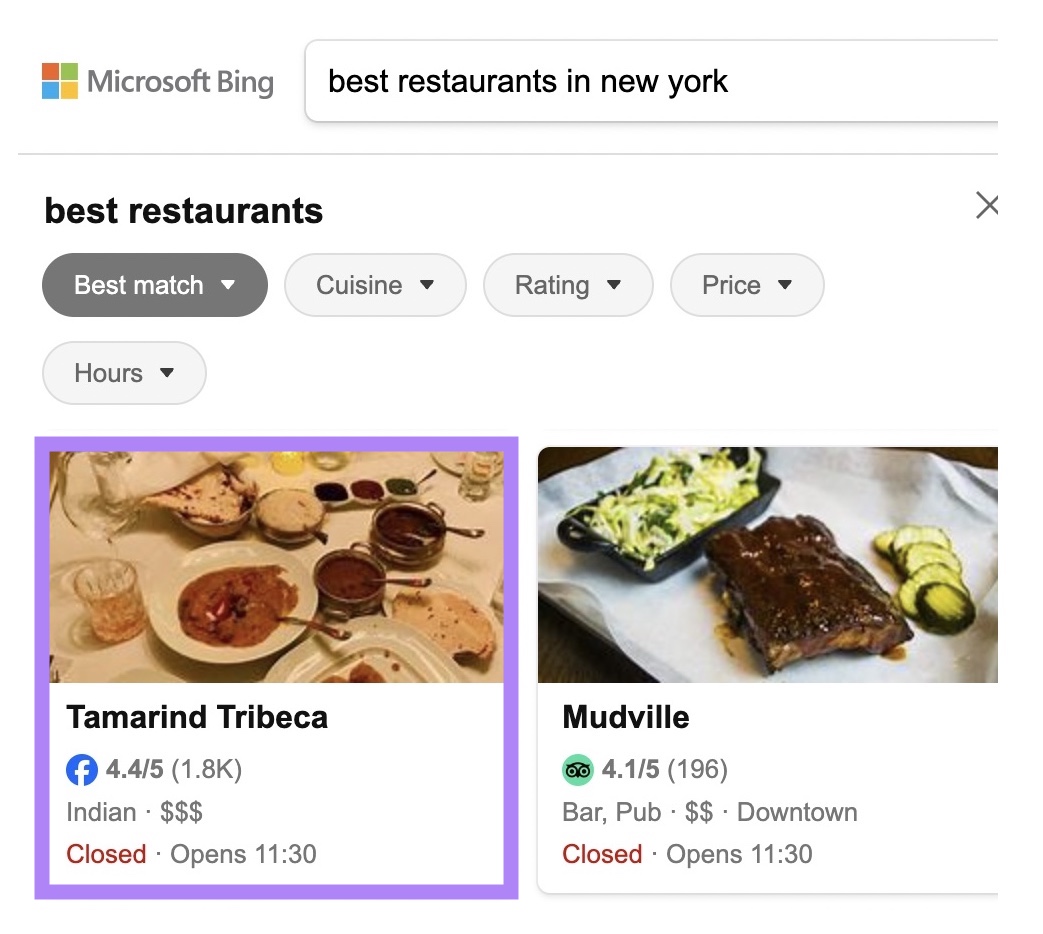
As of now, Meta AI doesn’t surface Facebook Page data for local queries, but this may evolve as social-local integrations expand.
To update your Facebook listing, go to “Settings & Privacy” from the top-right. Then click “Settings.”
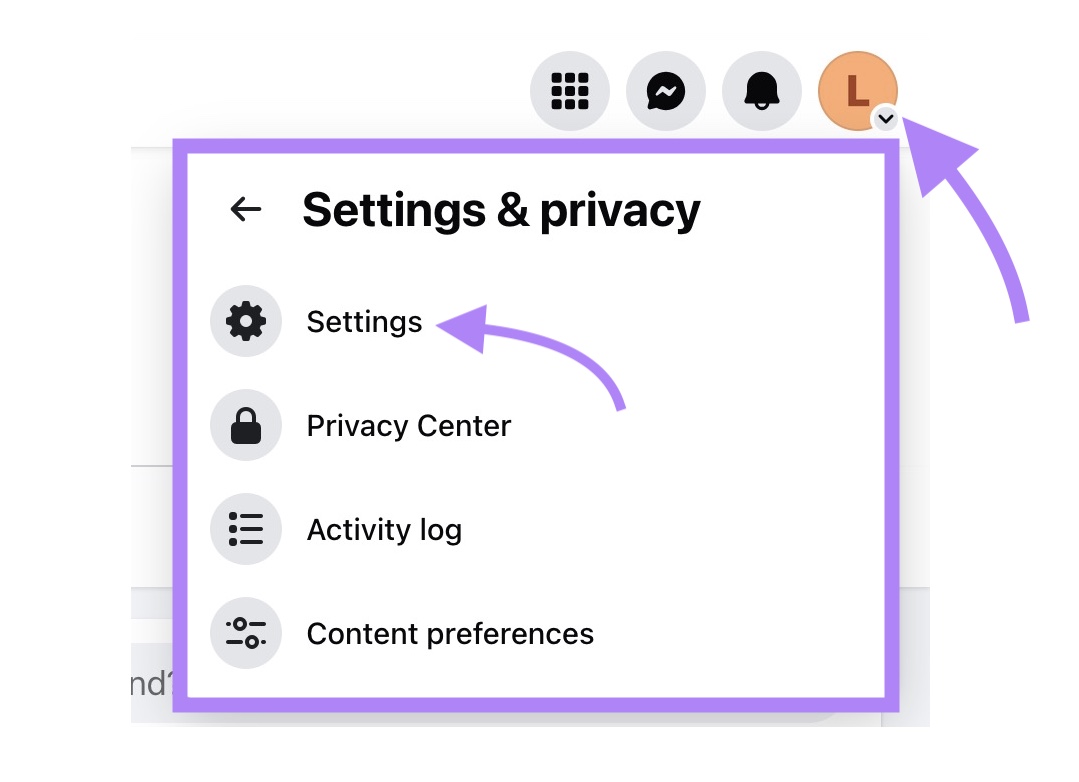
Go to “Page details” from the left-hand navigation bar.
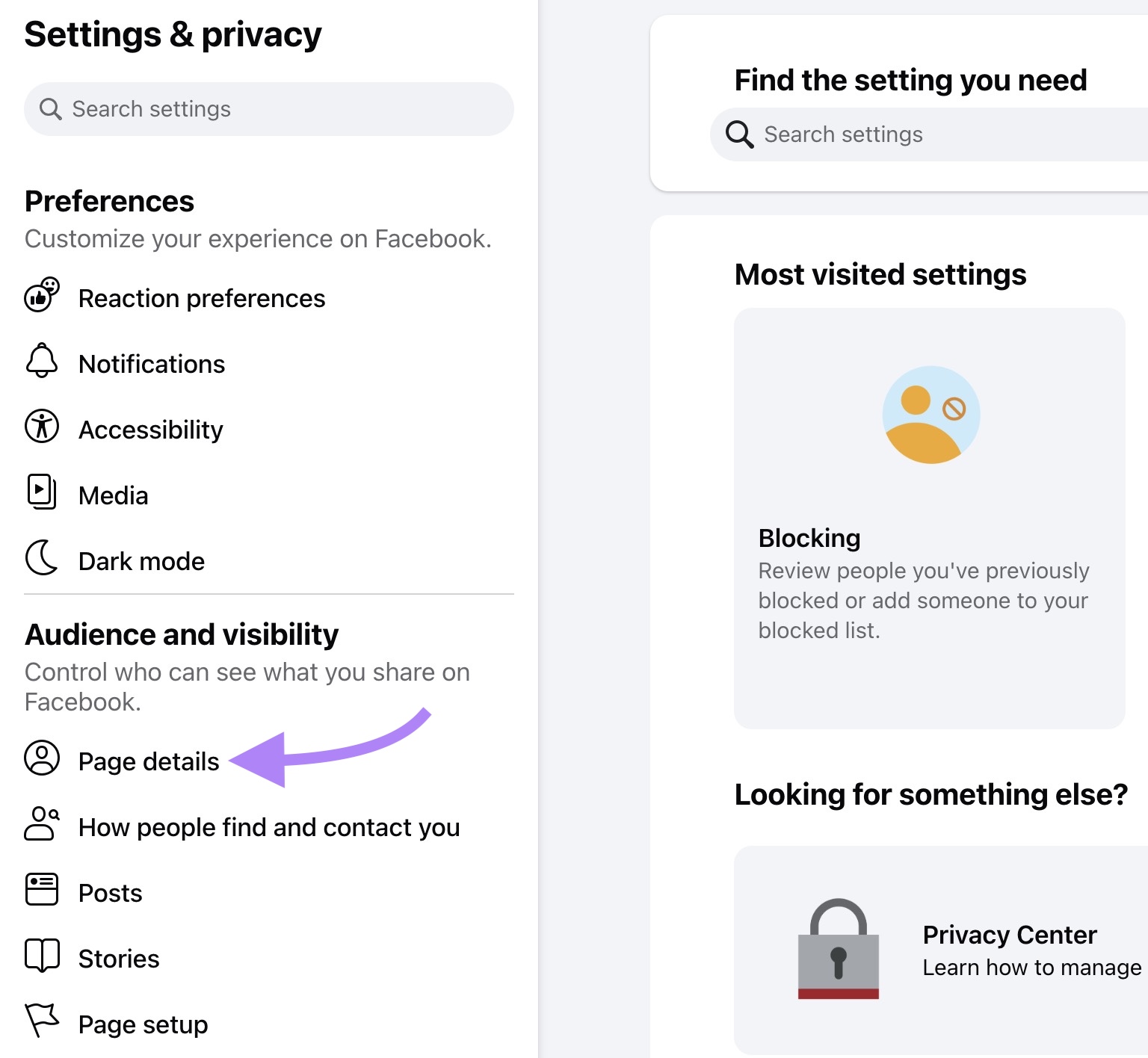
From there, edit details like your address, business hours, phone number, and category.
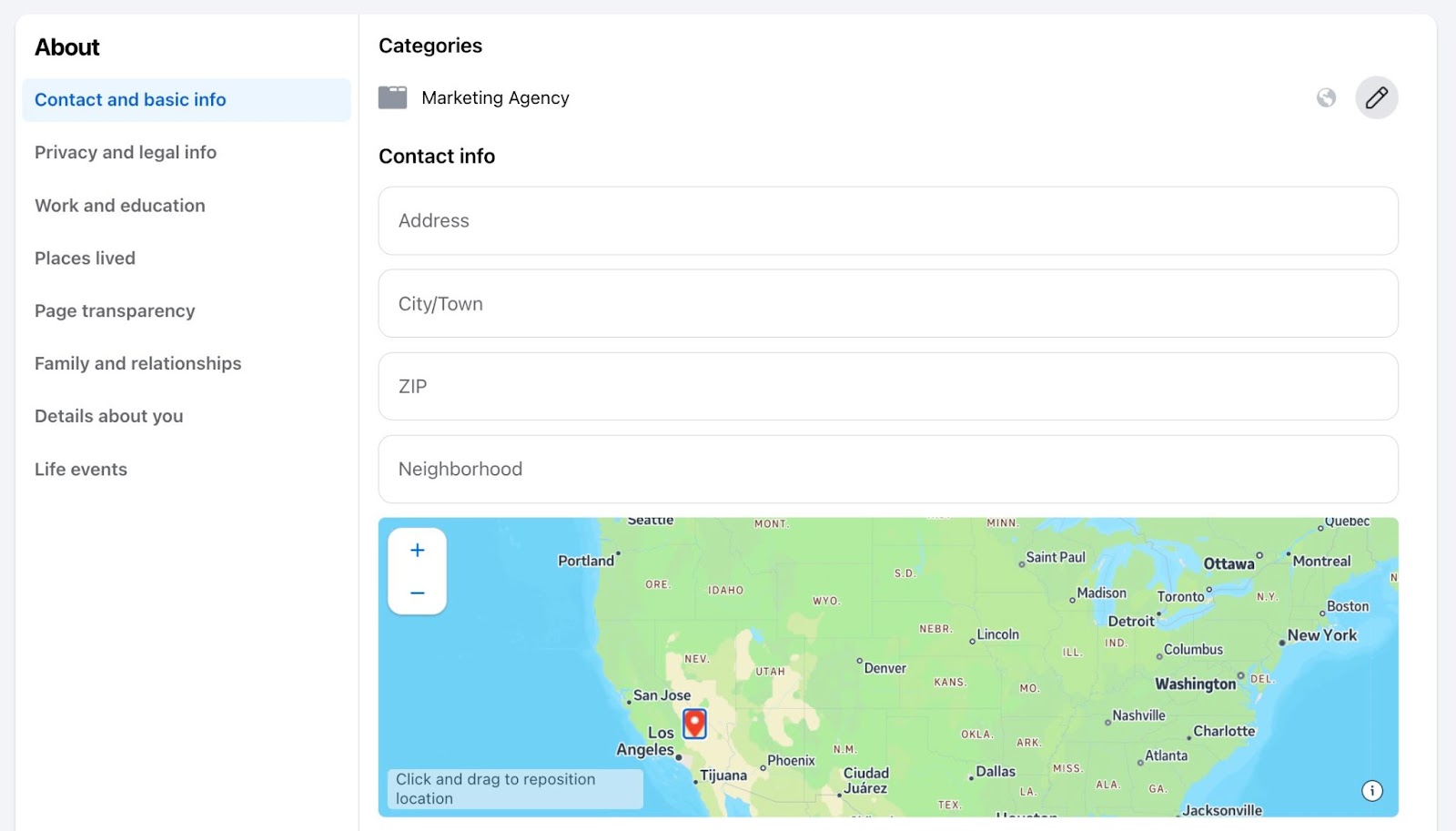
Update Your Local Business Listings with Semrush
Your online business listings are crucial for local SEO. With the right tools, keeping them accurate and consistent is easy.
The Listing Management tool within Semrush’s Local Toolkit allows you to update your business info across directories from one dashboard.
Check your listings regularly to identify and resolve potential issues before they impact your visibility or confuse customers.


